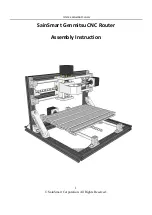
7 Operation on xDSL accesses
56
ARGUS 152
The example at left shows a sink. It can
indicate a stub line (bridge tap).
With the rule of thumb:
L[m] = 50 / f [MHz],
you can estimate the length of a stub line
if you know the frequency in MHz (in this
example 0.535 MHz):
L [m] = 50 / 0,535 MHz = 93 m
There is a stub line approx. 93 m long.
In this example, given a frequency of
approx. 3.85 MHz, the stub line is approx.
13 m long.
ARGUS determines the following ADSL connection parameters:
ADSL connection parameters:
Net data rate
Actually usable ATM bitrate in kbit/s.
Attainable data rate
Theoretically attainable ATM bitrate in kbit/s.
Relative capacity
Line capacity utilisation in percent.
Latency mode
ARGUS shows "interleaved" or "fast", depending on the
DSLAM configuration.
Attenuation
Attenuation on a line over the entire length and bandwidth in
dB. From a specific attenuation on, certain access types are no
longer recommended. However, it is better to compare
individually calculated attenuation values that are
recommended for specific access types with the dB value in the
HLOG graph, at 300 kHz (cursor).
Output power
Output power in dBm with reference to 1 mW.
Example: Bridge tap on ADSL
Example: Bridge tap on VDSL
















































